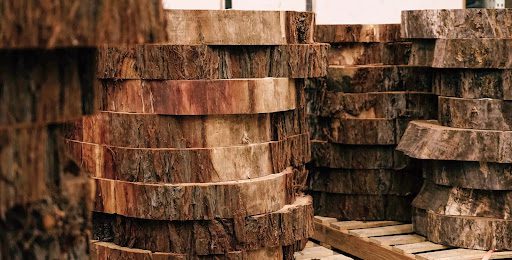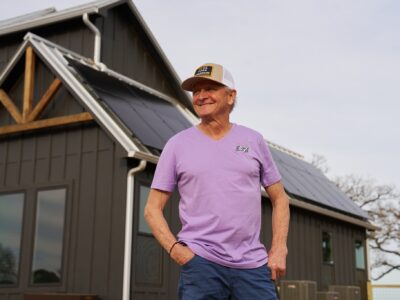Trees provide a powerful defense against climate change by capturing and storing atmospheric carbon dioxide (CO2) during photosynthesis. They are essential in urban areas because of the amount of CO2 emitted from buildings, transportation, and industry. According to the U.S. Department of Agriculture (USDA), urban trees in the contiguous U.S. alone store more than 708 million tons of carbon, or about 12.6% of the country’s annual CO2 emissions.
Unfortunately, a whole lot of urban trees are felled each year. The World Resources Institute estimates that about 36 million trees come down annually in cities across the U.S. due to disease, development, old age, and storm damage. Much of the wood is burned, chipped into mulch, or hauled to landfills — even though preserving it can serve an important environmental purpose.
One organization that aims to change this trend is the Urban Wood Project, an initiative the USDA Forest Service started in 2018 to reclaim and reuse lumber from fallen urban trees and other sources.

The public-private partnership came about when the Forest Service brought together Room & Board, a home-furnishings brand, and Humanim, a social services enterprise. The original idea was to make a positive environmental, social, and economic impact on the city of Baltimore.
According to the Room & Board website, the Urban Wood Project had “dual goals of opening jobs to people with barriers to employment and salvaging materials from vacant row homes, including century-old wood and marble.” The USDA Forest Service initially reached out to Room & Board because of its history of sustainable practices and its focus on innovation.
The project eventually spread to other metro areas across the country, including Detroit, Minneapolis, New York City, and the California cities of Anaheim and Sacramento.
Lumber is reclaimed in various ways, including from dwellings slated to be torn down and trees removed for disease, maintenance, or storm damage.

As the USDA noted, wood waste usually comes in two forms: fresh-cut lumber and timber from deconstruction. Cities throughout the U.S. have underutilized supplies of each because much of it ends up in landfills, where it releases its carbon into the atmosphere. In contrast, the carbon in reclaimed wood remains sequestered.
The Sacramento Tree Foundation estimates that the wood in only 100 coffee tables will retain 13 metric tons of CO2 — equal to taking 2.8 cars off the road for a year.
“Taking wood out of the waste stream and turning it into furniture helps store the carbon, which positively impacts the environment,” said Gene Wilson, Room & Board’s vice president of vendor management/merchandising.

Room & Board, founded in 1980, uses three types of reclaimed wood. One is lumber from deconstruction, a rustic style that might feature nail holes and large knots. The others are “live edge,” typically used in large slabs for tables, and dimensional, used in things like cabinets, bookcases, tables, and chairs.
The Minneapolis-based furniture business diverts an estimated 200 trees a year from the waste stream and sells around 30 products sourced from wood from the initiative.
“Wood is our most-used material. Sourcing it responsibly just makes sense,” Emily McGarvey, director of sustainability at Room & Board, told “GreenBiz” in a January interview. “And with 90% of our products manufactured in the United States, we are in a unique position to keep materials and production within the country.”

One of Room & Board’s latest projects is with Tri-Lox, a Brooklyn-based millwork and design company. The project involves tapping into decommissioned water tanks and adding them to Room & Board’s reclamation efforts. Tri-Lox is also piloting with the NYC Park System to use salvaged oak trees and transform them into Stanley Wall Shelves.
“The city is finding that as its water table rises due to climate change, some of its trees will not react well. These trees include London plane sycamore and white and red oak,” McGarvey said. “We are piloting solutions as these trees will ultimately need to be replaced with species that can react better to a changing climate.”





